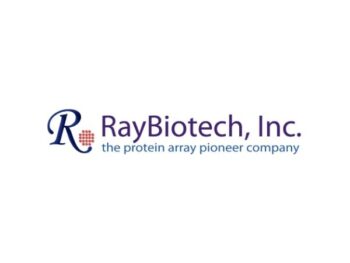Human Cytokine Array Q4000,8 Sample Kit
Description
Quantibody® Human Cytokine Array 4000 Kit. A combination of Human Inflammation Array Q3, Human Growth Factor Array Q1, Human Chemokine Array Q1, Human Receptor Array Q1, and Human Cytokine Array Q4. Detects 200 Human Inflammatory Factors, Growth Factors, Chemokines, Receptors, and Cytokines. Suitable for all liquid sample types.
Product Description
Specifications
| Size | 8 Sample Kit |
|---|---|
| Species | Human |
| Quantitative/Semi-Quantitative | Quantitative |
| Number of Targets Detected | 200 |
| Compatible Sample Types | Cell Culture Supernatants, Plasma, Serum, Tissue Lysates, Other Body Fluids, Cell Lysates |
| Solid Support | Glass Slide |
| Method Of Detection | Fluorescence Laser Scanner |
| Design Principle | Sandwich-based |
Product Features
- More cost-effective than traditional ELISA
- High specificity and system reproducibility
- Suitable for diverse sample types
- Low sample volume requirement: 250 µL or less
- Get results same day (6-hour processing time)
- Well-suited for high throughput assays
- Q Analyzer software provides one-step computation
Target Names
4-1BB (TNFRSF9/CD137), 6Ckine (CCL21), Activin A, AgRP, ALCAM (CD166), Amphiregulin, Angiogenin, Angiopoietin-1, Angiostatin, AXL, BCMA, BDNF, Betacellulin (BTC), beta-NGF, bFGF, BLC (CXCL13), BMP-4, BMP-5, BMP-7, Cathepsin S, CCL28 (MEC), CD14, CD30 (TNFRSF8), CD40 (TNFRSF5), CD40 Ligand (TNFSF5), CD80 (B7-1), CEACAM-1, Contactin-2 (TAG1), Cripto-1, CTACK (CCL27), CXCL16, DAN, DKK-1, DR6 (TNFRSF21), Dtk, E-Cadherin, EGF, EGFR, EG-VEGF (PK1), ENA-78 (CXCL5), Endoglin (CD105), Eotaxin-1 (CCL11), Eotaxin-2 (MPIF-2/CCL24), Eotaxin-3 (CCL26), ErbB3, E-Selectin, Fas (TNFRSF6/Apo-1), Fas Ligand (TNFSF6), Fc gamma RIIB/C (CD32B/C), FGF-4, FGF-7 (KGF), Flt-3 Ligand, Follistatin, Galectin-7, GCP-2 (CXCL6), GCSF, GDF-15, GDNF, GITR (TNFRSF18), GM-CSF, gp130 (sgp130), GRO alpha/beta/gamma, Growth Hormone, HB-EGF, HCC-1 (CCL14), HCC-4 (CCL16), HGF, HVEM (TNFRSF14), I-309 (TCA-3/CCL1), ICAM-1 (CD54), ICAM-2 (CD102), ICAM-3 (CD50), IFN-gamma, IGF-1, IGFBP-1, IGFBP-2, IGFBP-3, IGFBP-4, IGFBP-6, IL-1 alpha (IL-1 F1), IL-1 beta (IL-1 F2), IL-1 R1, IL-1 R4 (ST2), IL-1 Ra (IL-1 F3), IL-10, IL-10 R beta, IL-11, IL-12 p40, IL-12 p70, IL-13, IL-13 R alpha 1 (IL-13 R1), IL-13 R alpha 2, IL-15, IL-16, IL-17 RA, IL-17A, IL-17B, IL-17F, IL-18 BP alpha, IL-2, IL-2 R alpha, IL-2 R beta (CD122), IL-2 R gamma (Common gamma Chain), IL-21 R, IL-23, IL-28A (IFN-lambda 2), IL-29 (IFN-lambda 1), IL-31, IL-4, IL-5, IL-6, IL-6 R, IL-7, IL-8 (CXCL8), IL-9, Insulin, IP-10 (CXCL10), I-TAC (CXCL11), LAP/TGF beta 1 (TGF beta 1), LIF, LIGHT (TNFSF14), LIMPII, Lipocalin-2 (NGAL), L-Selectin (CD62L), Lymphotactin (XCL1), LYVE-1, MCP-1 (CCL2), MCP-2 (CCL8), MCP-3 (MARC/CCL7), MCP-4 (CCL13), M-CSF, M-CSF R, MDC (CCL22), MICA, MICB, MIF, MIG (CXCL9), MIP-1 alpha (CCL3), MIP-1 beta (CCL4), MIP-1 delta (CCL15), MIP-3 alpha (CCL20), MIP-3 beta (CCL19), MPIF-1 (CCL23), MSP alpha/beta, NAP-2 (PPBP/CXCL7), NGFR (TNFRSF16), NrCAM, NRG1-beta 1 (HRG1-beta 1), NT-3, NT-4, Osteopontin (SPP1), Osteoprotegerin (TNFRSF11B), PAI-1, PARC (CCL18), PDGF R beta, PDGF-AA, PDGF-AB, PDGF-BB, PECAM-1, Platelet Factor 4 (CXCL4), PLGF, RAGE, RANTES (CCL5), Resistin, SCF, SCF R (CD117/c-kit), SDF-1 alpha (CXCL12 alpha), SDF-1 beta (CXCL12 beta), Siglec-5 (CD170), Sonic Hedgehog N-Terminal (Shh-N), TARC (CCL17), TECK (CCL25), TGF alpha, TGF beta 1, TGF beta 2, TGF beta 3, Thrombopoietin (TPO), Tie-2, TIM-1 (KIM-1), TIMP-1, TIMP-2, TNF alpha, TNF beta (TNFSF1B), TNF RI (TNFRSF1A), TNF RII (TNFRSF1B), TRAIL R3 (TNFRSF10C), TRAIL R4 (TNFRSF10D), Trappin-2, TREM-1, TROP1 (EpCAM), TSLP, uPAR, VCAM-1 (CD106), VEGF-A, VEGF-C, VEGF-D, VEGFR1, VEGFR2, VEGFR3, XEDAR
Application Notes
- Multiplexed Protein Detection
- Biomarker Screening
- Identifying Key Factors
- Confirming Biological Process
- Biomarker Validation
- Validation of Antibody Array Results
- Quantitative Protein Detection
- Establishing Normal Range
- Human Cytokine Array Q4000 Slide(s)
- Blocking Buffer
- Wash Buffer 1
- Wash Buffer 2
- Lyophilized Standard Mix
- Biotinylated Detection Antibody Cocktail
- Streptavidin-Conjugated Fluor
- Slide Washer/Dryer
- Adhesive Plastic Strips
- Manual
- Distilled or deionized water
- Small plastic boxes or containers
- Pipettors, pipette tips and other common lab consumables
- Orbital shaker or oscillating rocker
- Aluminum foil
- Gene microarray scanner or similar laser fluorescence scanner
View Compatible Laser Scanners
Don’t have a compatible scanner? RayBiotech now offers FREE scanning service for all RayBio glass slide antibody arrays! Learn More
- Dry the glass slide
- Prepare Standards
- Block array surface
- Incubate with Samples and Standards
- Incubate with Biotinylated Detection Antibody Cocktail
- Incubate with Streptavidin-Conjugated Fluor
- Disassemble the glass slide
- Scan with a gene microarray laser scanner
- Perform densitometry and analysis
Storage/Stability
“
Ray Biotech
There are no question found.







Rating & Review
There are no reviews yet.